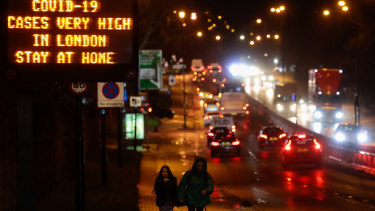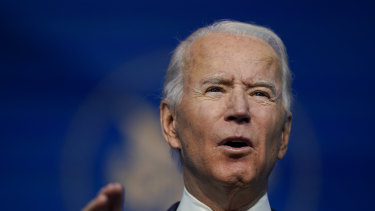Markets’ topsy-turvy year ends with new threat to economic recovery
A difficult year is not ending well for investors, with the emergence of a mutant strain of the COVID-19 virus overshadowing what might otherwise have been regarded as positive news for economies and markets.
The new variant of the virus in the UK, Europe and elsewhere triggered sharp sell-offs in markets in Europe, with the Stoxx index down 2.3 per cent and the FTSE 100 falling 1.73 per cent.
The US market was initially down 2 per cent before recovering to end 0.4 per cent lower for the day, sliding from Friday’s record levels.

The VIX index, which measures volatility and is regarded as a barometer of fear in markets, spiked from 21.7 to 28.73 before sliding to 25.16, still well above its long term average of about 17.
The emergence of the new strain of the virus has created uncertainty, which markets detest, even as economies close in on the potential “super-spreader” season of Christmas and New Year.
Financial markets have generally downplayed the virus, looking forward to 2021 and beyond and pricing in a strong economic recovery as the growing list of successful vaccines are distributed.
The new variant of COVID-19, because it appears to spread far faster than existing strains and because it isn’t yet known whether it is resistant to the existing vaccines, has forced new lockdowns in the UK and the cessation of trade and travel between the UK and Europe.
Given that it is improbable that it hasn’t already reached the US, whose borders to Europe remain open, and that US infections and deaths are already out of control, the threat to the priced-in recovery next year is growing.
Overly-optimistic projections of how rapidly the vaccines might be deployed in the US are adding to the risk that Wall Street investors – who have overlooked the chaotic and incompetent US response to the pandemic – have been overly confident in pricing in a recovery.
The threat posed by the COVID-19 variant took the focus off what might otherwise have been regarded as a positive breakthrough in the impasse between the Democrats and Republicans over a fiscal response to the economic fallout.
Congress did pass a $US2.25 trillion ($3 trillion) aid package back in March but, despite the Democrat-controlled House passing a second $US3.4 trillion bill in May and then a scaled-down $US2.2 trillion package in September, it had been unable to convince the Republicans to support them in the Senate.
On Monday, after weeks of intense negotiation, Congress finally agreed a $US900 billion aid and stimulus package that included $US600 cheques to individuals, funding to extend the Paycheck Protection Program (similar to our Jobkeeper) and extensions of supplements to unemployment benefits.
Unfortunately, the scale and nature of the package means it may be too little, too late to insure against a second wave of downturns in the economy.
The fiscal support will last only a few months and, while President-elect Joe Biden has said he will seek a new and much larger round of aid once he is sworn in, there is no certainty the Republicans will agree to any further spending.
The markets have been underpinned by the open-ended support of the US Federal Reserve Board, which only last week recommitted to maintaining near-zero interest rates, its quantitative easing (purchases of bonds and mortgages to keep rates low) and emergency lending to companies for as long as it takes to get the US back to full employment and an inflation rate above 2 per cent.

President-elect Joe Biden has said he will seek a new and much larger round of aid once he is sworn in.Credit:AP
While the US central bank has provided a safety net for investors – and has inflated financial asset prices in the process – it has deployed all the tools at its disposal.
If infection rates and deaths in the US keep rising and the current hotchpotch of uncoordinated responses is maintained – every state, indeed city, has adopted different measures, with no central government guidance – there will need to be more fiscal stimulus if the economic damage is to be contained and new and more damaging waves of unemployment, losses of income and business failures are to be avoided.
Until this week the US yield curve had steepened which, along with the exuberance in equity markets, said investors were pricing in an end to the pandemic and a surge in activity.
That optimism was reflected in a price-earnings ratio for the S&P 500 of about 27 times 2020 earnings, a long way above the long-term average of about 16 times. At about 24 times expected 2021 earnings, the market is vulnerable to any COVID-19-driven disappointment.
Against that, of course, is the reality that equity investors have nowhere else to go for positive returns. There’ll be a lot of fingers crossed, and an intense focus on the course of the pandemic, over this near-unprecedented holiday season.
Business Briefing
Start the day with major stories, exclusive coverage and expert opinion from our leading business journalists delivered to your inbox. Sign up here.
Stephen is one of Australia’s most respected business journalists. He was most recently co-founder and associate editor of the Business Spectator website and an associate editor and senior columnist at The Australian.
Most Viewed in Business
Source: Thanks smh.com